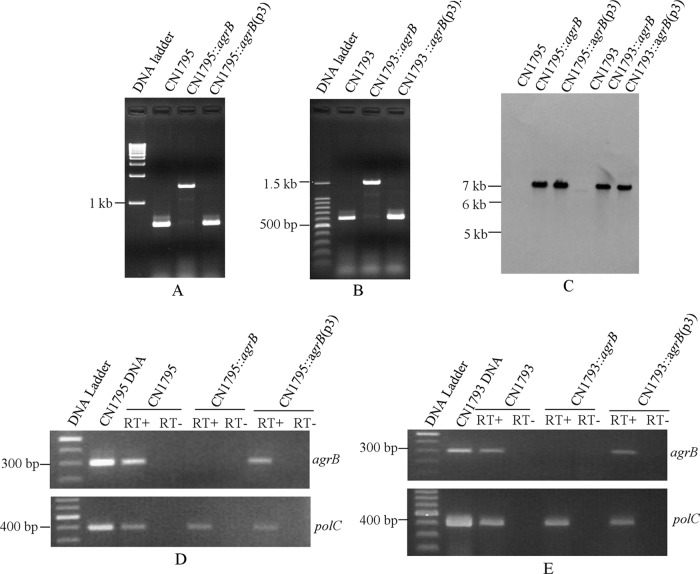Fig 2.
Construction of agrB null mutants in C. perfringens type B strains CN1793 and CN1795 by intron-based insertional mutagenesis. PCR analyses using primers to internal agrB ORF sequences and DNA from wild-type CN1795, the agrB null mutant (CN1795::agrB), or the complemented strain CN1795::agrB(p3) (A) or from wild-type CN1793, the agrB null mutant (CN1793::agrB), or the complemented strain CN1793::agrB(p3) (B). (C) Southern blot hybridization analysis for the presence of a group II intron insertion in wild-type CN1793 or CN1795, the agrB null mutants of those strains, and complementing strains. DNA from each strain was digested with EcoRI, electrophoresed on a 0.8% agarose gel, transferred onto a nylon membrane, and hybridized with a DIG-labeled intron-specific probe. Sizes of DNA fragments in kilobases (kb) are shown to the left. (D) RT-PCR analyses for agrB mRNA expression by wild-type CN1795, CN1795::agrB, or CN1795::agrB(p3). Sample RNA was collected from 4-h TGY cultures. As indicated, reverse transcriptase (RT) was (+) or was not (−) added to the reaction tubes. DNA polymerase III (polC) served as an internal control. (E) Similar RT-PCR analyses for agrB mRNA expression by wild-type CN1793, CN1793::agrB, or CN1793::agrB(p3).

